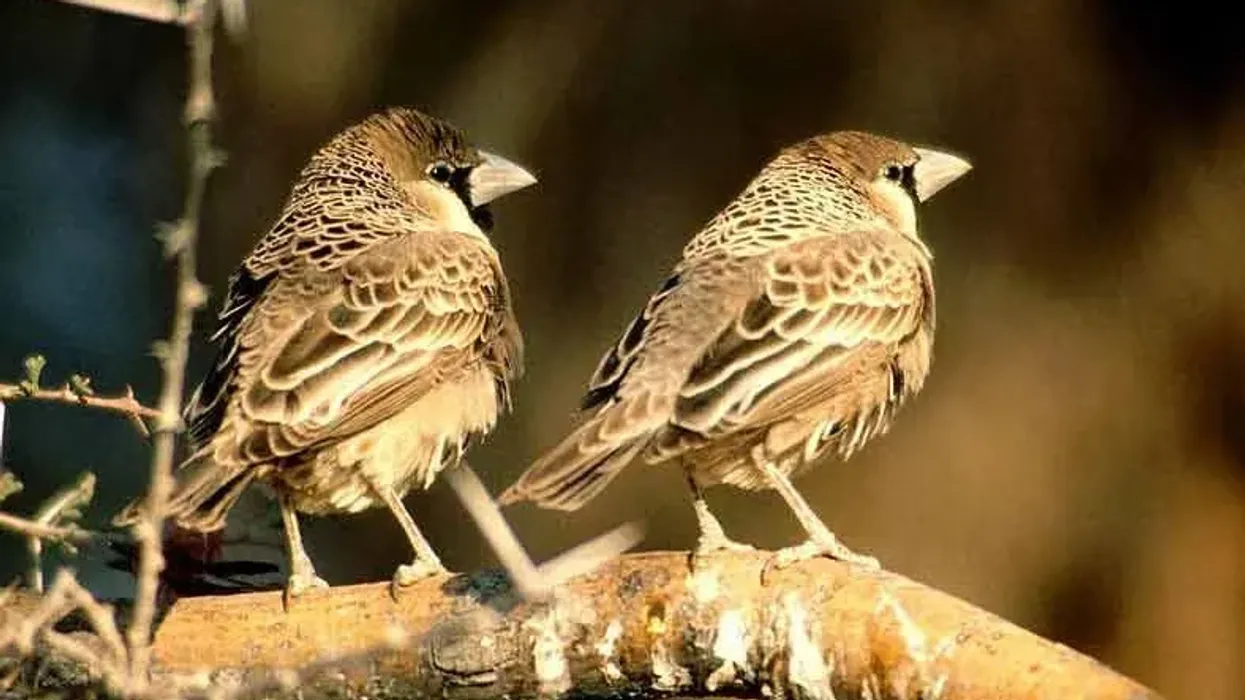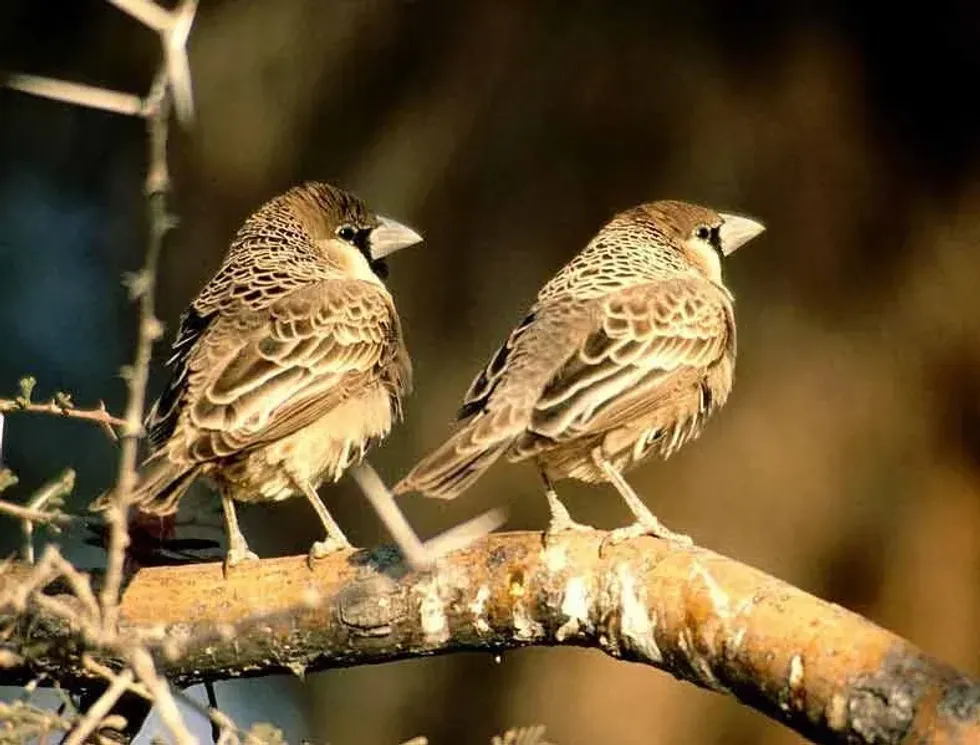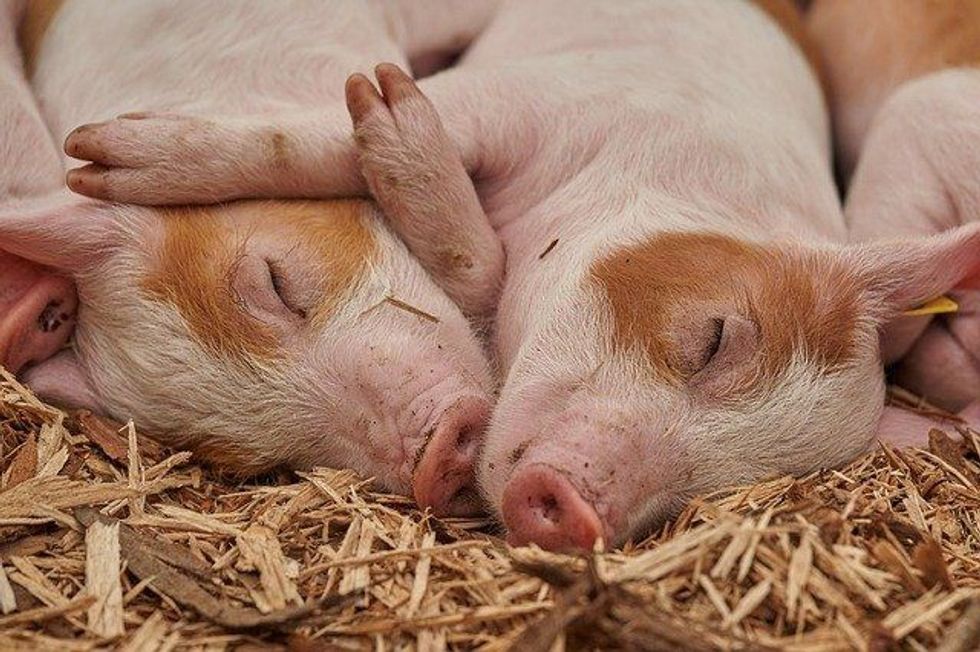The sociable weaver is a friendly bird species found in countries like Namibia, Botswana, and other African countries. It is endemic to desert areas, such as the Savanna, the Kalahari, and more.
This species is well known for its nesting chambers and nests in general. Their structures can grow to be more than 23 ft tall, which is four times as tall as the average human.
Are you curious about these birds? Are you interested to discover all about the sociable weaver nests, their food, breeding, eggs, chicks, the grasses they live in, and the water they do not need?
Then look no further, because this is a one-stop guide to all things you need to know about this bird! If you think you would want to know about more creatures after, then check out our bird of paradise and barn owl fact articles too!
Sociable Weaver Interesting Facts
What type of animal is a sociable weaver?
The sociable weaver (Philetairus socius) is a type of bird.
What class of animal does a sociable weaver belong to?
The sociable weaver (Philetairus socius) is included in the bird class.
How many sociable weavers are there in the world?
Though there are no exact numbers yet, it is estimated that there are anywhere from 16,000-25,000 sociable weaver birds in the world.
Where does a sociable weaver live?
The sociable weaver birds live in the dry savanna of Southern Africa and West Africa and in countries such as Namibia, Botswana, and more. The African sociable weaver bird is made around dry grasses which help them build the structure of their nests, usually around desert and dry trees.
What is a sociable weaver's habitat?
The sociable weaver nest is the main feature of their habitat. This habitat is usually dry savanna, with several short, stout, and leafless trees with heavy branches. There are also dry shrubs and grass all around, which helps them make their nesting chambers.
Who do sociable weavers live with?
As the name suggests, the sociable weaver birds love company, and are very social! They live in a large colony of up to 500 individuals.
They collectively build and maintain large nesting chambers and look after the young ones as a group. Each nest has a pair with their offspring, where they indulge in breeding and brooding. The sociable weaver nest is a great way for them to socialize.
How long does a sociable weaver live?
In the wild, the sociable weaver can live up to 15 years. There have been some cases of them living up to 20 years old too.
However, a sociable weaver in captivity does not live as long, with their average age being less than 12 years. Since they thrive in areas like Namibia, South African countries like Botswana, and other places in South and West Africa, taking them to climate-controlled areas like labs and human homes is bad for them.
How do they reproduce?
They reproduce in the breeding season by mating. The eggs are laid promptly after, and sociable weaver chicks are born less than 20 days later. The sociable weaver eggs are dull and drab looking, but the birds are twice as cheerful. They are born with a brown body, splotched with black, cream, and other colors.
What is their conservation status?
As of 2016, their conservation status is Least Concern. This is great news for this social bird species because, in the early 2000s, they had been endangered. Thanks to conservation efforts, human-helped breeding, protecting eggs, and the birth of chicks, the population of these birds increased.
Sociable Weaver Fun Facts
What do sociable weavers look like?
This South African bird species is a small, round bird. The sociable weaver beak shape is sharp at the end and wide at the base, which helps them survive in the desert and build their home. They have black shades upon their back and lighter shades of brown and white on their underbelly.
How cute are they?
The sociable weaver is a very cute bird indeed. They are super fluffy, small, and adorable! They look even more so when in a nest on their tree, peeking out with their straight beaks and little eyes.
How do they communicate?
The sociable weaver talks a lot! They trill, have loud calls, constantly coo and sound out to speak to their colony members. This helps them keep in touch with their family, and stay alert from predators and other dangers. They have to be very loud so that their voices carry across the structure on the tree.
How big is a sociable weaver?
The sociable weaver size is around 5.5 in (144 mm). They are average-sized birds and are about the size of the human palm. This allows them to fit into their nesting chambers without worrying about predators.
How fast can a sociable weaver fly?
Though no one has ever subjected the sociable weaver to a speed test, they are relatively fast fliers. For short distances, they fly by beating their wings very fast, or when trying to escape predators. However, if they have to travel for longer distances over the African grasses, then they prefer to glide on the air currents instead.
How much does a sociable weaver weigh?
The sociable weaver is a very light bird and its weight is rather insignificant compared to other birds in their family tree.
Their weight is around 24-32 g. This is why they can fit into their nesting chambers well without the structure collapsing on the trees (or poles, or any other place where they decide to set up their home.)
What are their male and female names of the species?
There are no specific names for the males or females of the species.
What would you call a baby sociable weaver?
The young sociable weaver baby has no particular name.
What do they eat?
Their preferred choice in food is to eat insects and termites, but they also enjoy eating seeds and bits of grass on occasion. This is a great food choice because on winter nights, there is no food available in terms of vegetation.
Are they dangerous?
Not at all. The sociable weavers are friendly towards everyone they think is not a predator. Other than that, they have no venom, teeth, or any other attack mechanism that might hurt humans.
Would they make a good pet?
In short? No. The sociable weavers would make terrible pets for many reasons.
One, they construct elaborate nests that would not be sustainable for indoors. In fact, many of them have built nests and other structures on a roof or a building in the past, because human company is not a good idea for them.
Next, they are very sociable birds, and keeping the sociable weavers isolated will lead them to be depressed, upset, and feeling poorly.
Did you know...
The sociable weavers do not drink any water! It absorbs all its needed moisture from the food that it eats.
What is unique about sociable weavers?
One of the most unique things about the sociable weaver's nest is that other animals live in it too! Smaller birds, bigger insects, sometimes even weavers from another colony.
As long as they do not disturb the current residents, the sociable weaver is happy to host some house guests. However, predators have been known to sneak into the nest and make food out of the birds' eggs.
What does a sociable weaver bird nest look like?
The sociable weaver's nest is built on trees, and tall structures like a telephone pole, on a roof, poles, or a tall tree. Sometimes we even see a sociable weaver nest on a building. The nest actually resembles the thatched roof of a hut.
The sociable weaver nest has multiple nesting chambers connected with internal tubes. The outer chambers are usually cooler and the chambers on the inside are warmer. This is particularly useful on winter nights across Namibia, Africa, and the Kalahari where the temperatures are very extreme.
The sociable weavers build some of the sturdiest nests in the world, and also the biggest with some nests as big as 23 ft. A nest can be seen built on a telephone pole, multiple poles, and across trees in the Kalahari and all over South and West Africa.
The sociable weaver nests have entrances that are round and wide to keep out predators, and their weight is very light for the size of the structure. One family lives in each of the nests, and these nests can span across an entire tree or multiple poles.
Here at Kidadl, we have carefully created lots of interesting family-friendly animal facts for everyone to discover! Learn more about some other birds including secretary bird, or great green macaw.
You can even occupy yourself at home by drawing one on our Sociable Weaver coloring pages.









